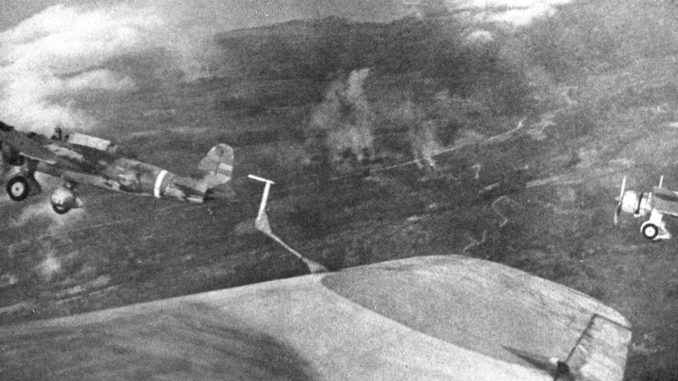
Following the initial Japanese attacks that had badly damaged the Far Eastern Air Force in December 1941, most of the surviving heavy bombers had been withdrawn well to the south. Meanwhile the remnants of the 24th Pursuit Group, themselves having suffered heavy losses to the Japanese Zeros, had begun to withdraw with the rest of General MacArthur’s forces into the Bataan Peninsula. From there the 24th would attempt to provide what assistance it could to the Army, although the pilots were under strict orders which forbade them from engaging in aerial combat – the fighters would be used for reconnaissance purposes only. The withdrawal of all units into Bataan was ordered on the 24th of December. Manila was declared an open city, in the hopes that it would be spared destruction at the hands of Japanese bombers. Unfortunately, most of the supplies earmarked for the impending siege were never transported to Bataan.
The remaining ground crews of 24th pulled back to Pilar airfield, a former rice paddy that was still under construction. The P-35 and P-40 fighters went to Lubao airfield, a former sugar cane field that was still not fully prepared, whilst awaiting the opening of Pilar. Lubao was disguised from the air by covering part of the runway with dead sugar cane, which was cleared by Filipino civilians prior to any flight operations, then replaced as soon as possible. Further to the south other airfields were being hastily prepared, including Orani, Cabcaben and Bataan Field, which was a converted highway. Around 25 planes successfully made the trip to Lubao, but they would not remain there for long with the Japanese rapidly approaching from their landing ground at Lingayen. Operations were limited due to the need for ground crews to help in the completion of the field. Men from the 27th Bomb Group, which had been activated but had never received its allotment of A-24 bombers, also found themselves drafted for labour work.
Although the PBY Catalinas of the Navy’s Patrol Wing 10 had withdrawn to Java, the unit’s utility section of SOC, OS2U and J2F seaplanes had remained behind. These based themselves at the small port of Marivales, on the southern tip of Bataan facing the island fortress of Corregidor. A motley collection of civilian aircraft, many ancient or suffering from damage caused by Japanese attacks, were assembled and used for courier and supply missions. This “Bamboo Fleet” of Beechcraft and Bellanca planes, plus a single ancient Curtiss O-1 biplane, was kept flying partly by ingenious crew who scavenged scrap metal for use as parts. These planes were used to ferry many of the senior flying officers of the 24th south, where it was hoped that they would pick up new fighters and fly them to Bataan – however, none of these men would return before the siege ended.
The Withdrawal to Bataan
From Lubao the fighters were kept busy flying reconnaissance missions, particularly over Lingayen Gulf. The number of available aircraft immediately began to be whittled down by losses, such as on the 29th of December when Lt Oscar Wyatt of 17th Pursuit Squadron was shot down in his P-35 by friendly anti-aircraft fire. The remaining planes would not stay at Lubao for long – by the 2nd of January the Japanese were already within a few miles of the field, and so the fighters were flown south. The ground crews of the five squadrons attached to the 24th Pursuit Group were sent south to act as infantry, in which role they would remain until the battle for Bataan ended.
On the 4th of January 18 P-40s were assembled for an attempt to intercept the now-daily bombing raid on Bataan. Initially the plan was for all of the fighters to fly south to Del Monte field on Mindanao after the mission, but the plan soon descended into farce. Due to a communications foul-up, the 9 P-40s from Pilar airfield did not get word that they were not to head to Mindanao but were instead to fly to Bataan Field. The nine P-40s failed to intercept the Japanese, and landed to refuel for the 500-plus mile flight to Mindanao – at the extreme end of the aircraft’s range without external fuel tanks. Six eventually made it to Del Monte intact, and another aborted to Bataan Field. One other P-40 was lost in a crash landing and the final fighter was destroyed in a crash when the pilot, who was killed, apparently lost his bearings and flew into a mountain. The other nine P-40s from Orani Field also missed the bombers, and retired to Bataan Field.
By the 8th of January the Japanese were already approaching Pilar, which like Lubao was abandoned. Now every flyable fighter was based at either at Bataan Field or the nearby Cabcaben Field – these remaining planes, under the command of Brig. Gen. Harold H. George, would be known as the Bataan Field Flying Detachment. This rump unit consisted of nine P-40s, a pair of P-35s, and a single North American A-27 that had been diverted from an order intended for the Royal Thai Air Force (complete with Thai-language instruments). One P-40 was soon lost when it ran into 20 Japanese Ki-27 fighters from the 50th Sentai immediately after takeoff, but the pilot managed to parachute to safety. Soon afterwards the lone A-27 cracked up when the engine failed shortly after takeoff, and the machine was damaged beyond repair in the subsequent crash-landing.
Further disasters followed on the 10th of January, when 5 Zeros of the Tainan Kokutai carried out a surprise low-level strafing run on Marivales at dawn. PatWing10’s utility section was caught on the beach and completely destroyed, with all five remaining aircraft destroyed. However, the sunken J2F was later salvaged and parts used to fix a surviving J2F, which was added to the Bamboo Fleet. This aircraft was put to use flying in supplies from the central Philippines, and was soon given the name “Candy Clipper” due to the crew’s thoughtful gesture of adding sweet treats to every supply load.
“We’re the battling bastards of Bataan;
No mama, no papa, no Uncle Sam.
No aunts, no uncles, no cousins, no nieces,
No pills, no planes, no artillery pieces.
And nobody gives a damn.
Nobody gives a damn.
– Frank Hewlett 1942
In mid-January the prohibition on aerial combat for the fighters was relaxed, it being thought that a successful interception of the Ki-36 planes that were being used as artillery spotters might raise the morale of the men on the front lines. Three P-40s went out on the first attempt, but failed to find any aircraft and instead strafed Japanese trucks. In reprisal, several 16th Sentai Ki-30s were sent to bomb Bataan Field, where two men were killed but no damage was done to the aircraft or facilities there. A few days later another attempt was more successful, when Lt Marshall Anderson downed a Ki-36 within sight of the front line. Unfortunately, Anderson was shot down and killed just days later when his patrol was ambushed by Japanese fighters – reports were received that he had parachuted successfully but was machine-gunned by the Japanese pilots. This patrol had been airborne to cover the arrival of P-40s from Mindanao. Four of the fighters that had been at Del Monte were ordered back to Bataan in confusing circumstances. One of these crashed in the ocean after an engine failure, although the pilot bailed out successfully.
In late January, with reports of Japanese aircraft operating from airfields around Manila led General George to order a night attack. Six P-40s were sent to bomb and strafe Nielson Field, but one ran into ditch whilst taxiing and in the event only two others set out on the mission. These nevertheless caught the Japanese completely by surprise, finding the airfield lit up in anticipation that the approaching aircraft were friendly. After dropping their small bomb loads and carrying out a thorough strafing the pair returned to Bataan. Encouraged, George immediately ordered a further raid by another six P-40s the same night. Both Nielson and Nichols Fields were strafed, as was a column of Japanese trucks that was spotted during the return flight.
In early February a trio of Bataan P-40s were sent to Mindoro, and island to the south of Luzon, to check on suspected enemy activity – it was reported that several Japanese bombers were based at an airfield there. In fact, the report was false so the pilots landed to pick up sacks of sugar to take back to Bataan, and they decided to bomb positions near the front on their return. Disaster struck however when two of the fighters apparently collided in mid-air, with both pilots killed. More encouraging was a successful night attack on Japanese barges that were ferrying troops to landing sites up and down the peninsula, conducted by six bombing and strafing P-40s.
By this time Japanese artillery batteries on the east coast of Manila Bay were shelling Corregidor island. In order to put a stop to this, the American batteries on the island needed accurate positions for the Japanese guns, and so Capt. Jesus Villamor of the Phillipine Air Force went up in an old training plane with a photographer to scout the area, escorted by five P-40s. The flight was uneventful until the group returned to Bataan, when Ki-27s fell upon them with one of the P-40s being shot down.
Now down to just a handful of P-40s, the Bataan Field Flying Detachment received a new commander when Capt. William E. Dyess of the 21st Pursuit Squadron was put in charge of flight operations. He had been commanding a detachment of ground crew as infantrymen, but was now posted to oversee the organisation of the unit as well as the Bamboo Fleet. For the most part the P-40s were kept out of combat, instead flying missions to drop supplies to pockets of troops caught behind the Japanese lines, to drop propaganda leaflets, or carry communications that couldn’t be entrusted to radio.
A real combat mission was assigned to the unit in early March. Reports had been received that a sall flotilla of Japanese ships had been spotted in Subic Bay, north-west of Bataan. Dyess was ordered to take five P-40s, one of which had been modified to carry a 500lb bomb, to attack these ships. The first wave of three fighters selected a suspected cruiser as their target, dropping 18 small bombs on the target. The cruiser put up heavy fire and one of the P-40s was shot down. A second wave, with Dyess himself flying the 500lb-bomb toting P-40, followed soon afterwards. Selecting a transport as his target, Dyess missed by 50 feet but nevertheless turned back with his wingman to strafe the same vessel, before escaping back to Bataan Field. Disappointed at missing, Dyess ordered another bomb be loaded on his fighter and set out again with a wingman to try again. Again missing the target, the bomb exploded amongst barges being loaded from a transport. The two P-40s then conducted a strafing attack and saw a ship, apparently loaded with ammunition, explode in a sheet of flame. Other strafers added to the damage, but two more precious P-40s were lsot in landing accidents. That left just two airworthy P-40s. The attack may have done limited damage but it proved that the pilots could still hurt the Japanese.
Escape from Bataan
Soon afterwards, senior officers began to leave Bataan. General MacArthur himself was ordered to leave for Australia, making his way south by PT-boat to Mindanao, where he was then flown out in a B-17. General George, now having no air force worthy of the name, was also ordered to leave. Other officers were often seen attempting to talk themselves onto the Bamboo Fleet trips to the south, as morale began to deteriorate in the face of mounting supply problems and the slow but steady advance of the Japanese. The only bright spot was the return of two P-35s from Mindanao, which doubled the size of the Bataan fighter force.
The Japanese, after a month’s lull in proceedings, renewed their offensive with full force in early April. Artillery barrages wreaked havoc amongst the malnourished American and Filipino troops, and the line began to collapse. Japanese warships shelled positions along the peninsula on the 7the and 8th of April, grounding the last few remaining aircraft. Late on the 8th a P-40 piloted by Lt Jack Donaldson was sent out to drop small bombs on the approaching Japanese, then with the enemy very close to the field, he signalled that he was obeying orders not to return to Bataan but instead fly out to Cebu. The next day the last P-40 and the two P-35s were likewise ordered to leave, with the P-35s carrying an additional pilot packed into the baggage compartment. On the 9th the J2F “Candy Clipper” became the last plane to fly out of Bataan, carrying 6 men packed into the tiny passenger compartment. Among them was the Filipino Colonel Carlos P. Romulo, who would later serve six Filipino Presidents as a diplomat and play a role in the United Nations.
Bataan surrendered just hours later. The remaining members of the 24th Pursuit and 27th Bomb groups were taken into captivity, and forced to endure the Bataan Death March. Many of them would not survive the horrors of the Japanese PoW camps. Capt Dyess was amongst the captured, but he managed to escape with a group of other officers in early 1943, making his way back to the United States to tell of the ordeals suffered by the men of Bataan. Unfortunately, he would be killed in a plane crash whilst training for a return to combat.
I was prescribed Nolvadex for cancer of colon. I wasn’t sure that it would help and was looking for information about the drug on https://cheapnolvadexpct.com. Indeed, it has been recently proved that colon cancer can be caused by an imbalance of hormones, and therefore Nolvadex is prescribed to prevent further progression of the disease. So, if a medication is prescribed, you need to use this chance and get treatment.



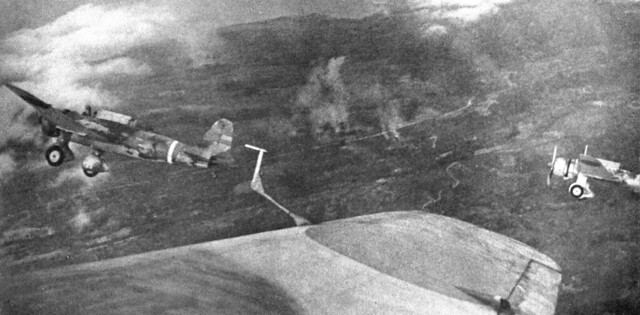

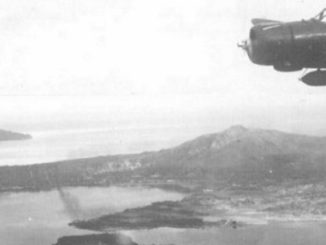
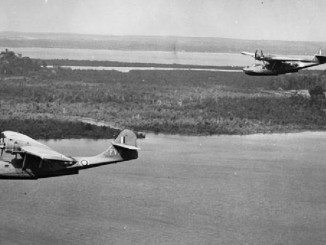
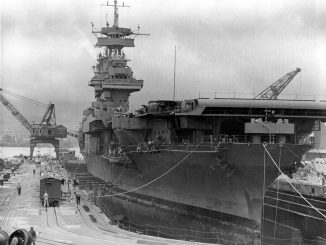
Leave a Reply